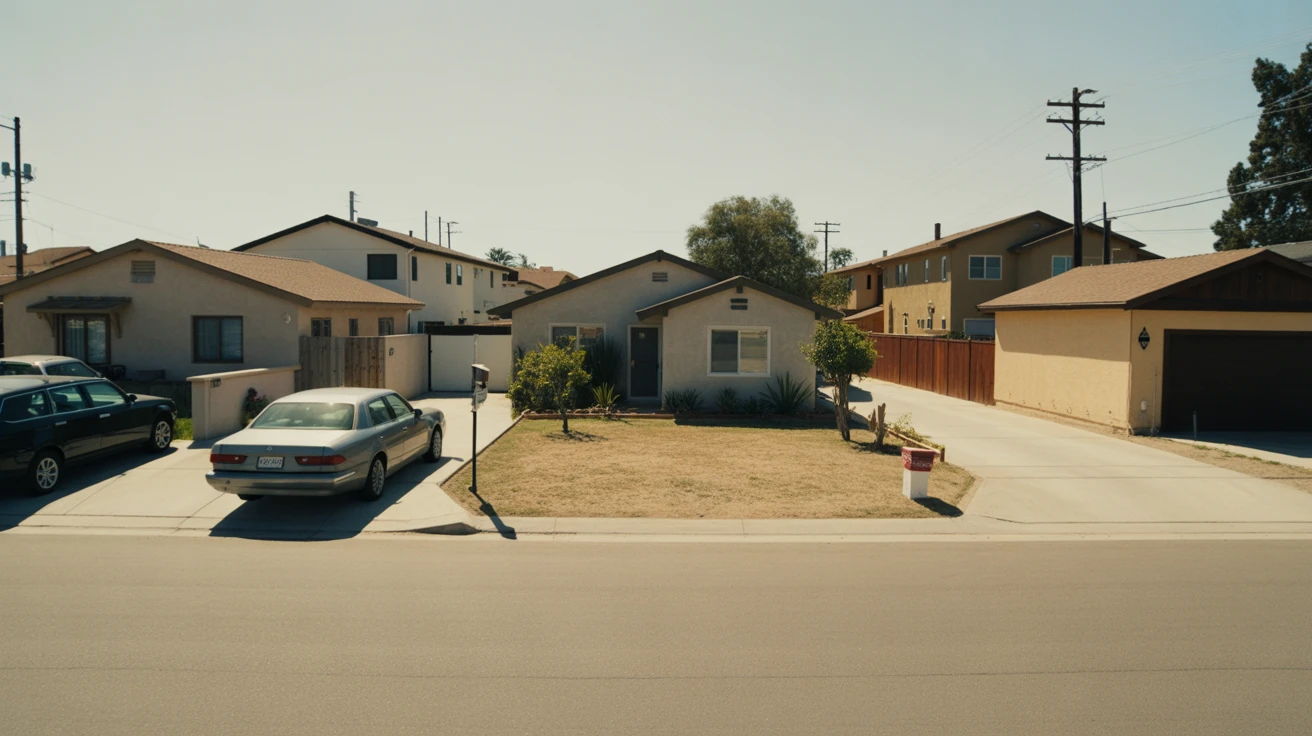
Budgeting Smarter in El Cajon
Planning your monthly budget in El Cajon is essential whether you’re a new mover or long-time resident. Expenses can add up quickly in this Southern California city, with housing and electricity often making up more than 55% of a household’s budget. Depending on your lifestyle, your monthly costs can vary substantially.
To avoid a budget shortfall, it’s important to have a clear picture of where your money is going each month. Many people underestimate their spending on discretionary categories like dining out, entertainment, and subscriptions. By tracking your actual expenses and comparing them to the examples below, you can identify areas to trim back if needed to stay within your means.
What Real Budgets Look Like in El Cajon
Here’s a breakdown of typical monthly expenses for three different households in El Cajon:
| Expense | Jasmine (27, single renter) | Sam & Elena (dual income renters) | The Ortiz Family (homeowners) |
|---|---|---|---|
| Gross Monthly Income | $3,000 | $7,000 | $9,500 |
| Rent/Mortgage | $1,450 | $2,400 | $2,800 |
| Utilities | $120 | $250 | $350 |
| Food | $400 | $800 | $1,200 |
| Transportation | $150 | $500 | $800 |
| HOA/Fees | $0 | $0 | $350 |
| Miscellaneous | $500 | $1,200 | $1,500 |
| Savings | $380 | $1,850 | $2,500 |
These estimates reflect common lifestyle costs in El Cajon. Your individual expenses may differ.
As you can see, housing is the biggest line item for all three households, ranging from 30-48% of gross income. Renters can expect to pay around $1,400-$2,400 for a 1-2 bedroom apartment, while homeowners with a mortgage spend closer to $2,800 per month.
Food is another significant expense, averaging $400 for a single person and $1,200 for a family of four. This assumes a mix of grocery shopping and dining out. Transportation costs also vary based on household size and commute distance, but typically fall between $150-$800 per month.
Biggest Cost Drivers
While every budget is different, there are some common factors that can cause expenses to balloon in El Cajon:
- Seasonal utilities: Electricity bills tend to spike in the summer months when temperatures regularly exceed 90°F. Running the A/C around the clock can easily add $100+ to your monthly SDG&E bill.
- Commute costs: Gas, tolls, and parking fees can add up quickly if you drive to work in San Diego or another nearby city. Carpooling and public transit can help offset these costs.
- HOA fees: If you live in a condo or planned community, monthly HOA dues can range from $200-$600 depending on your neighborhood and amenities. Be sure to factor this into your housing budget.
- Rising rent: Rental rates in El Cajon have increased steadily in recent years, outpacing wage growth. Renewing your lease often means absorbing a 5-10% rent hike, which can strain your budget from one year to the next.
Tips to Stretch Your Budget Further
Living in El Cajon doesn’t have to break the bank. With a little planning and creativity, you can trim your expenses without sacrificing your quality of life:
- Shop strategically: Take advantage of discount grocery stores like Aldi and Grocery Outlet, and stock up on staples when they go on sale. Meal planning can also help you avoid costly last-minute takeout.
- Reduce utility costs: SDG&E offers a Time-of-Use pricing plan that provides lower rates for off-peak electricity use. You can also save energy by installing ceiling fans, solar screens, or a smart thermostat.
- Optimize your transportation: If you live and work in El Cajon, consider using public transit or biking to get around. You’ll save money on gas and parking while reducing your carbon footprint.
- Look for free entertainment: From hiking trails to community events, there are plenty of low-cost ways to have fun in El Cajon. Check the city’s Parks and Recreation calendar for free activities throughout the year.
🏆 Pro Tip: Many utility providers offer rebates for energy-efficient upgrades like insulation, windows, and appliances. These can help offset the cost of home improvements while lowering your bills over time.
FAQs About Monthly Budgets in El Cajon
Q: Can you live comfortably in El Cajon on $3,000 per month?
A: It’s possible for a single person to live on $3,000 per month in El Cajon, but it requires careful budgeting. You’ll need to keep your housing costs under $1,500 and limit discretionary spending to make it work. Saving may be a challenge at this income level.
Q: What’s a realistic rent budget for El Cajon?
A: Expect to spend at least $1,400 per month for a decent 1-bedroom apartment in El Cajon. Nicer properties in neighborhoods like Fletcher Hills or Granite Hills can cost $1,800 or more. For a 2-bedroom, budget closer to $2,000-$2,400 per month.
Q: How much should I budget for food in El Cajon?
A: Food costs vary based on your household size and dining habits, but plan on at least $400 per month for one person and $1,000+ for a family. You can trim this budget by cooking at home, packing lunches, and limiting meals out.
Planning Your Next Step
Creating a sustainable budget in El Cajon starts with understanding your non-negotiable expenses and spending habits. Use the examples above as a starting point, then track your actual costs to see how they align. You may need to adjust some categories up or down to make the numbers work.
Remember, these figures are based on gross income, meaning your take-home pay will be lower after taxes and deductions. Be sure to budget based on your net income to avoid overspending. With the right planning and discipline, you can make the most of your money in El Cajon.
